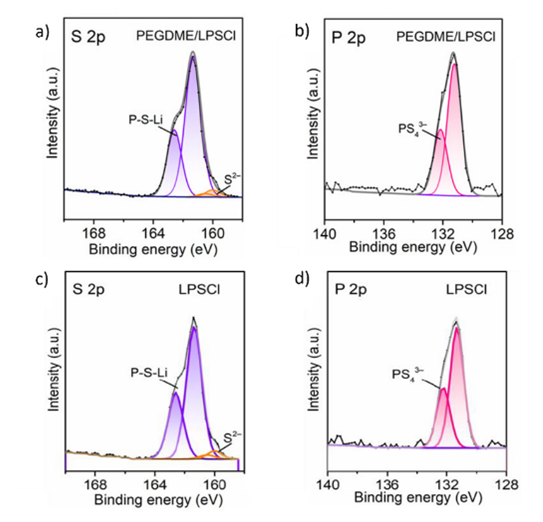
The development of solid-state batteries (SSBs) has gained significant attention due to their potential for enhanced safety and energy density compared to traditional lithium-ion batteries (LIBs). SSB performance is greatly affected by the stability of interfaces throughout the battery cell, which vary depending on the materials chosen for the cathode, electrolyte/separator, and anode. Lithium metal anodes can achieve excellent performance but are expensive and highly reactive, leading to unwanted reactions at the solid electrolyte (SE)/electrode interface that can impact long-term performance. It is therefore critical to design electrolytes with high ionic conductivity/Li+ transport, a wide electrochemical operating window, and stable interfaces.
Composite solid electrolytes (SEs) comprised of polymer matrices, inorganic fillers, and Li salts offer better performance compared to single-solid-state electrolytes, but incomplete understanding of external/internal interface stability has hindered their practical use in SSBs. In these materials, Li+ transport is governed by organic/inorganic interfaces within the SE and at the interface formed between the SE and neighboring electrode, which also governs long-term performance.
Learn More?
Please click on ‘Request Application Note’ and we will send you the full application note ‘In-situ XPS: Investigating Stable Interfaces for Improved Solid-State Battery Performance’.
